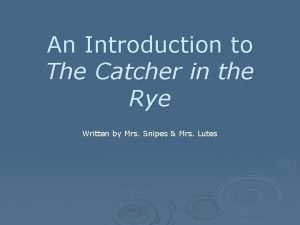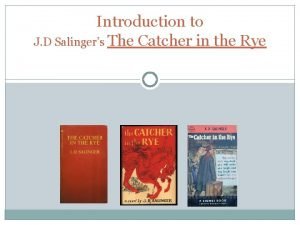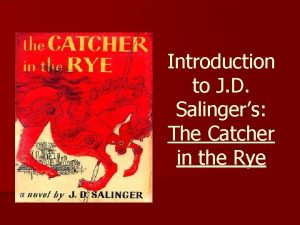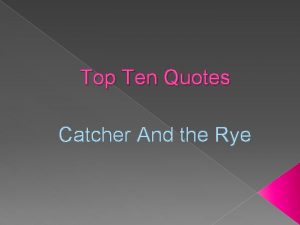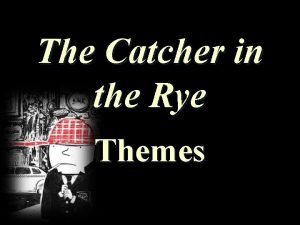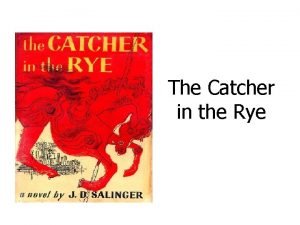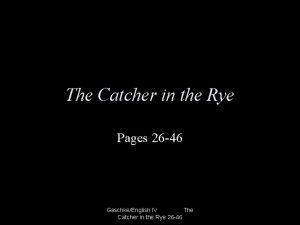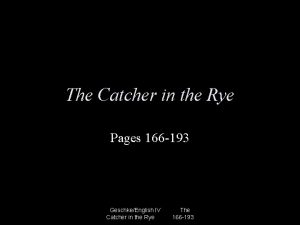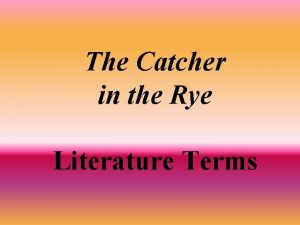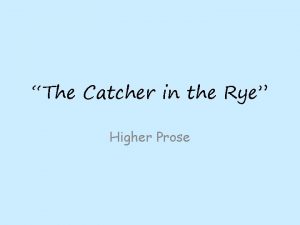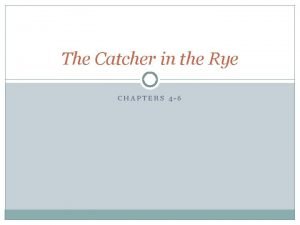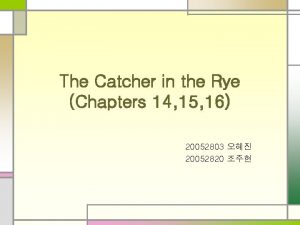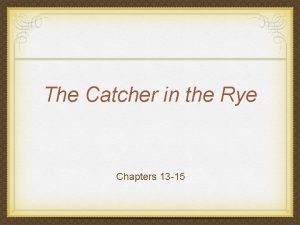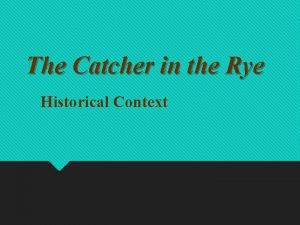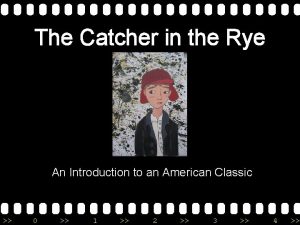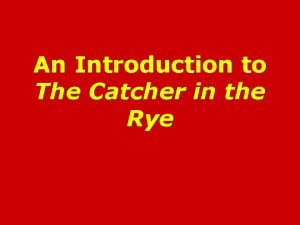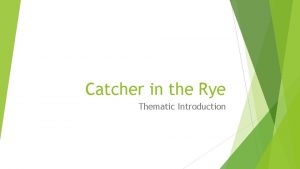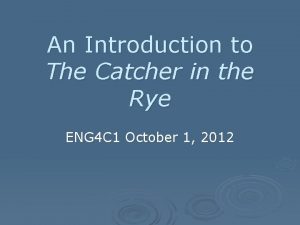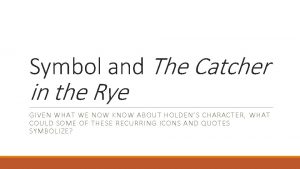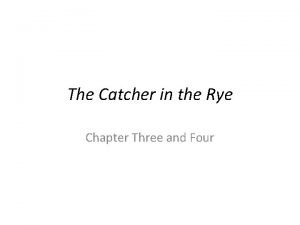The Catcher in the Rye Introduction And Historical














- Slides: 14

The Catcher in the Rye Introduction And Historical Context enotes. com. The Catcher in the Rye. Summary and Study Guide, enotes. com, Inc. , n. d. Web. 27 September. 2010.

Historical Context • • • Postwar Prosperity Cold War Concern Education Pressure to Conform The Growing Generation Gap

Postwar Prosperity • The events in The Catcher in the Rye take place in 1946, only a year after the end of World War II. • Adults at this time had survived the Great Depression and the multiple horrors of the war. • Paradoxically, the war that wounded and killed so many people was the same instrument that launched the nation into an era of seemingly unbounded prosperity.

• During the postwar years, the gross national product rose to $500 billion, compared with $200 billion in prewar 1940. • In unprecedented numbers, people bought houses, television sets, second cars, washing machines, and other consumer goods.

• No wonder the nation wanted to forget the past and to celebrate its new beginnings. • The celebration took the form of a new materialism and extreme conservatism. • Traditional values were the norm. • People did not want to hear from the Holden Caulfields and J. D. Salingers of the era. • They were in a state of blissful denial.

• Holden has withdrawn from this society enough to see it from a different perspective. • He hates the banality and hypocrisy he sees in the adult world and is therefore reluctant to participate in it. • His behavior, while that of an adolescent trying to affirm his own identity, also symbolizes the perceived shallowness of people and society.

• Most of the things Holden fears peak in the 1950 s, when conservatism, rigid morality, and paranoid self-righteousness held the nation in a tight grip. • Small wonder that 1950 s parents assailed Salinger's novel when it hit book stores and libraries in 1951. • It undermined the foundations of their beliefs and threatened to unsettle their placid but pleasant existence, which was sustained by their hatred of an outside enemy—communism.

Education • In 1950 about ten percent of all children were educated in Catholic schools, which at the time received federal funding. • This became a topic for debate as people disputed whether or not private institutions should receive taxpayer money. • Public schools that employed Roman Catholic nuns as teachers also became a target of debate, as some states, such as Wisconsin, denied these schools public support.

• Such actions were supported by the National Education Association, which took a strong antireligious stance. • On the other hand, the National Catholic Educational Association argued that Catholic citizens supported public schools, and so it was unfair to deny parochial schools funding when they were meeting the same educational goals.

• Religion was more prevalent in public schools during the 1950 s; religious topics were routinely taught in public schools: students listened to Bible readings (which were required in twelve states and the District of Columbia), and many students were given "released-time" breaks, during which they were allowed to leave school for one hour a week to attend religious classes.

Pressure to Conform • Social pressures to conform were intense in the 1950 s, not only in politics but also within the nation's educational system, which enjoyed multiple infusions of government funds. • A college education became the passport to prosperity, especially after the G. I. bill of 1944 helped pay for war veterans' higher education.

• Corporations grew rapidly to meet the increasing demands of consumers and sopped up the growing number of skilled employees. • Dress codes and embedded company cultures muted individualism. • Jobs for white males were secure, while women stayed home and raised the many children ushered in by the postwar "Baby Boom. "

The Growing Generation Gap • The "Baby Boom" caused Americans to pay more attention to the younger generation. • While Catcher in the Rye was somewhat before its time in this regard, the subject had particular relevance in the years after its publication. • Lifestyles began to change dramatically as teenagers began to date and become sexually active at a younger age.

• Teenagers became more rebellious, a trend that their parents viewed to be strongly influenced by a new, decadent form of music called rock 'n' roll. • Juvenile delinquency became an alarming problem and was considered a major social issue. • Teens were skipping classes and committing crimes, and parents were alarmed by their children's lack of respect for authority.
 Catcher in the rye introduction
Catcher in the rye introduction Catcher in the rye introduction
Catcher in the rye introduction The catcher in the rye introduction
The catcher in the rye introduction The catcher in the rye chapter 6 quotes
The catcher in the rye chapter 6 quotes Catcher in the rye topics
Catcher in the rye topics Catcher in the rye themes
Catcher in the rye themes Catcher in the rye poem
Catcher in the rye poem Why doesnt holden throw the snowball
Why doesnt holden throw the snowball Catcher in the rye pages
Catcher in the rye pages Literary definition of analogy
Literary definition of analogy Holden's misinterpretation of comin' thro the rye
Holden's misinterpretation of comin' thro the rye Chapter 4-6 catcher in the rye
Chapter 4-6 catcher in the rye Catcher in the rye chapter 17-19 summary
Catcher in the rye chapter 17-19 summary Catcher in the rye chapter 14-15 summary
Catcher in the rye chapter 14-15 summary Chapter 13 catcher in the rye quotes
Chapter 13 catcher in the rye quotes
